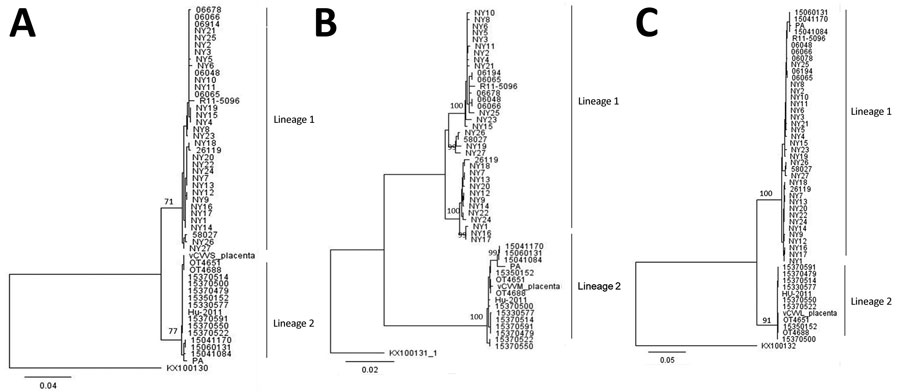Volume 28, Number 2—February 2022
Research
Role of Anopheles Mosquitoes in Cache Valley Virus Lineage Displacement, New York, USA
Figure 3

Figure 3. Phylogenetic analysis of Cache Valley virus, New York, USA, 2000‒2016. Maximum-likelihood phylogenetic trees show complete nucleotide sequences of small (A), medium (B), and large (C) genome segments. Numbers at nodes indicate boostrap support estimated by using 500 neighbor-joining replicates. Trees were rooted to Fort Sherman virus small, medium, and large genome segments (GenBank accessions nos. KX100130, KX100131, and KX100132). Scale bars indicate nucleotide substitutions per site.
1These authors contributed equally to this article.
Page created: October 17, 2021
Page updated: January 22, 2022
Page reviewed: January 22, 2022
The conclusions, findings, and opinions expressed by authors contributing to this journal do not necessarily reflect the official position of the U.S. Department of Health and Human Services, the Public Health Service, the Centers for Disease Control and Prevention, or the authors' affiliated institutions. Use of trade names is for identification only and does not imply endorsement by any of the groups named above.